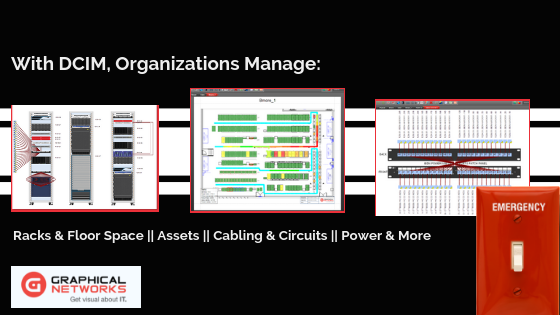
Not every organization needs data center infrastructure management software (DCIM). As we’ve discussed over and over again on this blog (and will continue to do so), it’s not a solve-every-problem-and-boil-the-ocean kind of software. What DCIM software is, however, is a way to manage and control key aspects of data center life that, when not controlled, can lead to some major problems in terms of outages, expenses, waste, and workflow.
To sum up DCIM in a nutshell: it’s software that gives organizations actionable insights about what’s going on with their network and data center infrastructure. To drill down a bit, DCIM can give insights about floor and rack management, environmental/power/temp monitoring, asset management, cable and circuit layouts, and logical/virtual/application views of the network. Now, not all DCIM solutions will excel in — or even offer — all of the functions above. The trick, as you can read about here, to finding the right DCIM software is identifying what your organization needs to do/understand/visualize.
Why manage larger networks and data centers with DCIM software? Because without it, you could end up staring down a major disaster — both in the press and in the courts. Every organization provides some kind of service for which they are on the hook: if the service can’t be delivered within the agreed upon timeframe, they fail to deliver on the agreement. If services for a large number of customers can’t be delivered….the problem just stacks up and up.
Take, for example, this tale out of the United Kingdom between a property management powerhouse and a major airline. The property manager operated the airline’s data center. The data center experienced a major outage that lasted three painful days and left thousands of air passengers without flights. The estimated damages from this three day pain fest? A whopping $75 million (in US dollars). Ouch.
It goes without saying, of course, that the airline is now suing the data center operator. We’ll see how that turns out…but we’re not holding our breaths that either party will end up in a winning situation after the loss of reputation that occured for both.
So: while we can’t say definitively if said property manager was using DCIM, we can point out that DCIM is designed in part to help avoid massive 3-day power outages — and deliver on those crucial customer agreements.
 With DCIM, you can stop problems before they progress into larger ones…or disasters.
With DCIM, you can stop problems before they progress into larger ones…or disasters.
Below is just a bit of detail on some of the key ways in which DCIM helps organizations manage better — and avoid crises like the one outline above:
Avoid Wasted Floor & Rack Space
Floor and Rack management in DCIM gives organizations an understanding of their physical space: where they have room to grow, and what’s overloaded, both on the floor and in racks. With these insights, managers can plan for growth and capacity effectively. Further, existing floor and rack space can be optimized.
Stop Burning Through Money on Power & Cooling
When you use a DCIM solution with real-time power and temp, you can see how your IT equipment is using energy — from the device to the rack to the room and even the overall data center level.
Troubleshoot Faster (& Avoid Huge Mean-Time-to-Repair Costs)
If DCIM is a special sauce that makes data center management more effective, asset management could be called the secret ingredient. Your data center may well have thousands of different assets: being able to track these is impossible by hand — being able to troubleshoot these is impossible without some form of automation such as DCIM.
If a device goes down or a network outage occurs, how the heck can you figure out what the problem is, where the problem is, and what’s impacted by the problem without IT visualization? With (the right) DCIM software, you should be able to quickly identify the problem equipment, see exactly where it is located, and understand exactly what is impacted by the problem (such as dependencies, and so on).
Control Data Center Connectivity
While not all DCIM solutions include robust cabling management, it’s a function you may need. Knowing what’s connected to what, being able to fully decommissioned cables, and being able to identify ‘zombie connections’ that were never fully decommissioned, helps you avoid problems and avoid overspending on IT clutter your organization doesn’t actually need.
Bottomline? There are many functions in DCIM meant to help data centers manage their assets, save money, and avoid the time, expense, and humiliation of prolonged outages. Not all DCIM software is built the same, however, so if you are looking for software that will deliver on its promised ROI (and avoid the dreaded shelfware fate), you should start by identifying the big ticket items that you need DCIM to do for you.
Tip: check out our vendor-agnostic guide on choosing the right DCIM solution for your organization.